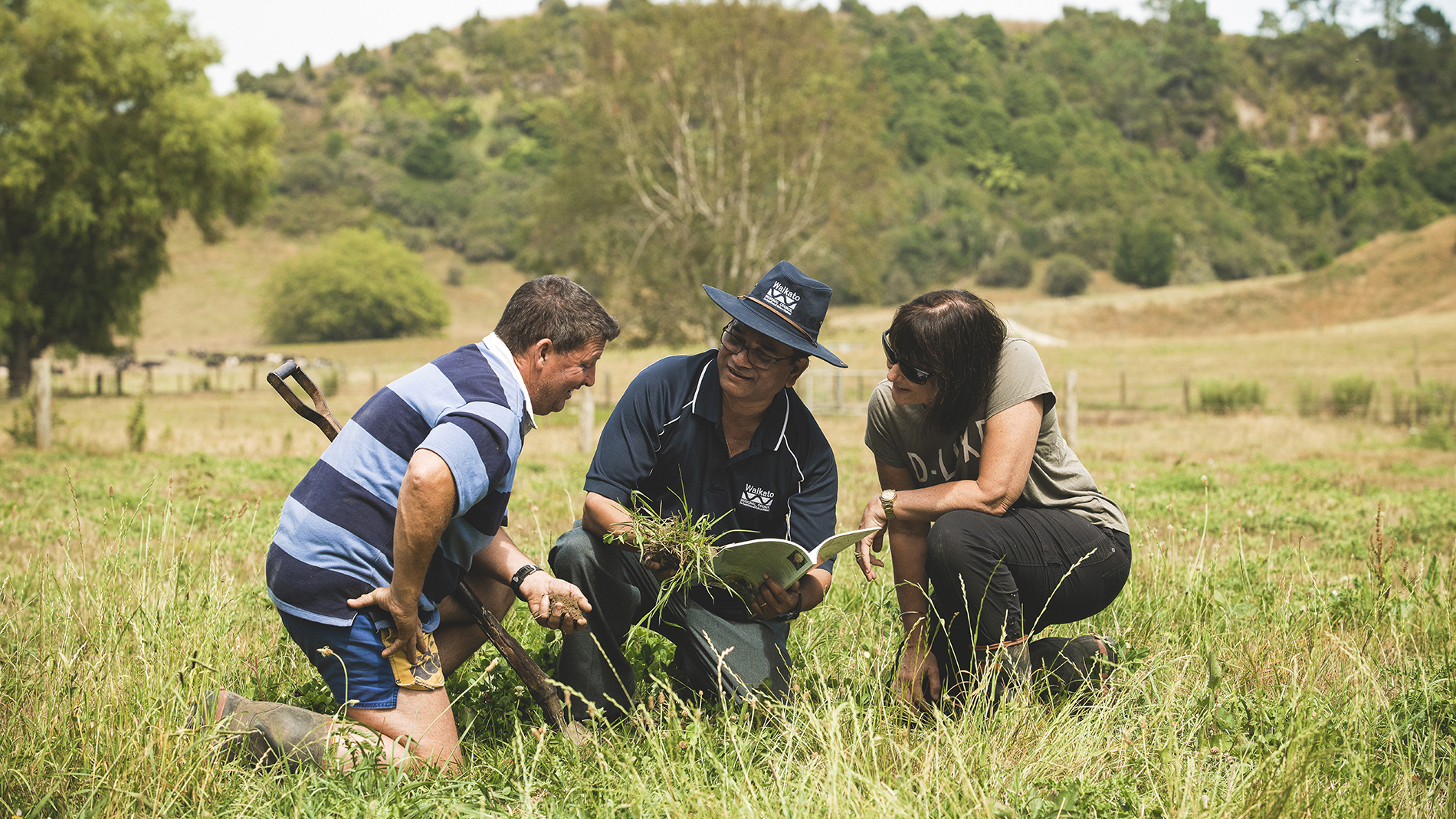We love where we live – the mighty Waikato. A diverse and resource rich region in the heart of the upper North Island. It’s a place of powerful opportunities.
Making the most of these opportunities relies on everyone playing their part for a healthy environment. A healthy environment enables communities to thrive. Get that right and the economy will be strong. That’s what we’re here to do – create a sustainable future for people today and generations to come.
It’s ambitious. The issues and solutions are complex and interconnected.
We’re in it for the long haul: improving water quality, planning for climate change and the transition to a low emissions economy, enhancing the health of our coastal and marine ecosystems, protecting and restoring our unique native plants and animals and the ecosystems they live in, keeping people safe on our roads and waterways as well as from floods and other hazards, and providing passenger transport services. We do all this, and more.
People working together is key. For us, that’s partnering with iwi and working with many others in our communities.
Our collective kaitiakitanga – our care – will make the Waikato region even better.
Tō Waikato, kia wana. Making your Waikato even better.
The meaning behind our tohu (symbols)
The pou, or pillar, can be likened to the pillars of a traditional meeting house, symbolising support, strength and resilience.
The niho taniwha, or teeth-like triangular pattern, represent leadership, stability and unity. Together, and with three pou standing strong, they become a tohu – a symbol of our purpose of working together for a Waikato region that has a healthy environment, vibrant communities and strong economy.
The He taiao mauriora | Healthy environment pou stands tallest, symbolising the strong bond people have with our taiao (the natural environment), and reflecting that the wellbeing of our rohe starts with a healthy environment.
Who decides what we do?
The people living in our rohe (region) are represented by 14 elected councillors. The councillors attend committees where they receive reports from staff and make decisions and/or recommendations on a range of matters which are then reported to or decided on by the full council. The full council meets once a month.
Our responsibilities are guided by a range of legislation, including the Local Government Act and Resource Management Act. It’s the councillors’ responsibility to set the priorities and adopt policies that direct our work programmes and activities. They monitor performance against the council’s objectives and policies, and manage the council’s resources, including setting financial and infrastructure strategies.
Our strategic priorities and goals
In March 2023, the council adopted its Strategic Direction for the three years 2023–2025. It sets out six strategic priorities and goals for success.
Achieving our goals means being clear about the complexity of the issues we face, the financial impact on our communities and the role of our council. In some cases, we'll be the lead provider, while in others we will collaborate, work in partnership, provide funding or use our convening and monitoring strengths to support or inform the outcomes we're working for.
Regional, city and district councils: What’s the difference?
In our rohe (region), there’s one city (Hamilton), seven districts and parts of three districts which straddle regional boundaries (Waitomo, Taupō and Rotorua).
Regional councils, like us, are responsible for functions that are best delivered at a regional scale, such as:
- managing the use of natural resources (water, soil, air, geothermal areas and coasts)
- regional transport planning and passenger transport services
- protecting and restoring natural biodiversity
- controlling harmful plant and animal pests
- providing flood protection and drainage schemes
- keeping water users safe
- responding to pollution incidents
- preparing communities for civil defence emergencies and coordinating the response when a disaster strikes.
We’re also a partner in a number of multi-agency groups looking at issues that cross regional boundaries, for example, the Upper North Island Strategic Alliance, Future Proof, Waikato Plan, and Waikato Mayoral Forum.
City and district councils (also called territorial authorities) cover smaller geographic areas than regional councils and are responsible for:
- essential services (local roads, water supply, wastewater, rubbish collection, parking and public toilets)
- community facilities (libraries, parks, sports fields, pools and playgrounds)
- developing and monitoring the district plan (land use and subdivisions)
- community health and safety (animal control, building control and liquor licensing).

